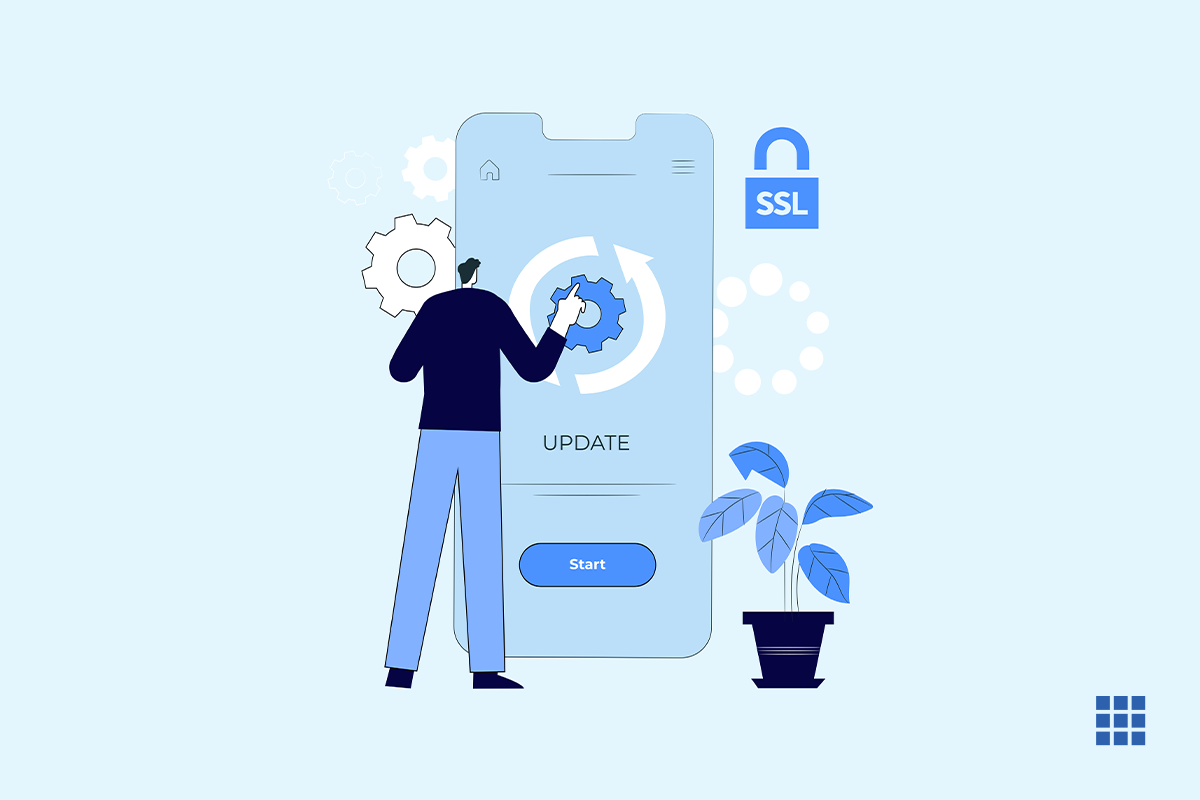Online security is one of the first things people think about when dealing with anyone on the Internet. Thus for a business or any endeavor on the internet to garner confidence, it needs to have a secure site
What is SSL Certificate?
SSL or more commonly called TLS is a protocol the encrypts website traffic and verifies server identity
Today, let us see how you can activate an SSL certificate for your website. Bluehost provides auto-SSL which is pre-installed in all domain names purchased on our platform. However, if the domain is purchased from any third party then you will have to make sure that the nameservers or A records of the domain name, point to Bluehost to activate the SSL.
Watch the video below to know more,
Let us login to our Bluehost control panel and start cracking
- Select the ‘Domains’ tab from the menu. Search for the domain name you want to activate the SSL for and click on ‘Manage’.
- This will open up all the details about the domain name. Click on ‘DNS’. Here you can see that as this domain name was purchased from Bluehost, the name servers associated with it are Bluehost name servers. If the domain wasn’t purchased on Bluehost, then you need to update the name servers to point to our platform in order to activate the SSL certificate.
- Next, we can check the status of SSL on your selected domain name. Go to ‘Advanced’ and scroll down to the security section and click on the SSL/TLS Status.
- This will open the SSL/TLS Status page. Here you can see the status of all the domains and subdomains under management. In this case, as we have purchased the domain from Bluehost, SSL comes pre-installed.
Let us try to resolve the website and see whether the secure Padlock appears on the browser. We have installed the SSL certificate but the secure padlock is missing from the site. We can find the reason behind the missing padlock through a simple padlock search provided by multiple websites, we would refer to https://www.whynopadlock.com/.
In the ‘Secure Address’ box, type in your domain name, complete the captcha and click on ‘Test Page’. This will give us the reasons why the website is not reflecting the padlock.
It will not reflect mainly for two reasons:
- Either the HTTPS detection code hasn’t been added to your website.
- Or there is some mixed content. In case of the first error, what you need to do is click on the link called More Info. Once you click on it, a pop-up opens where you will get the Force HTTPS code.
Copy that code and go back to your cPanel. Go to your ‘File Manager’ and locate the files where this code needs to be pasted.
As the domain name we were checking is the primary domain name, the files will be under Public_html. If this was an add-on domain name there would be a sub-folder under Public_html and under that folder, you would find the necessary files.
To add the code Go to the ‘Advanced’ setting on the Bluehost control panel
- In the ‘File’ section, click on ‘File Manager’.
- Go into the ‘public_html’ folder and search for the file .htaccess.If it is not visible, it means that it is either hidden or deleted. Let us first check if the file is hidden. If it is hidden, we can unhide it. Click on ‘Settings’ this will open the ‘Preferences’ pop-up, select the option ‘Show hidden files’ and click on ‘Save’.
- Now right-click on the .htaccess file and click on ‘Edit’.
- This will open up a pop-up, click on the ‘Edit’ button
- A new tab will open up. just add the redirection code copied from ‘Whynopadlock.com’ hit ‘Save Changes’ and you are done
You can now go and check if the padlock is reflecting for your website or not.
If you still need more help, then please chat with us.



